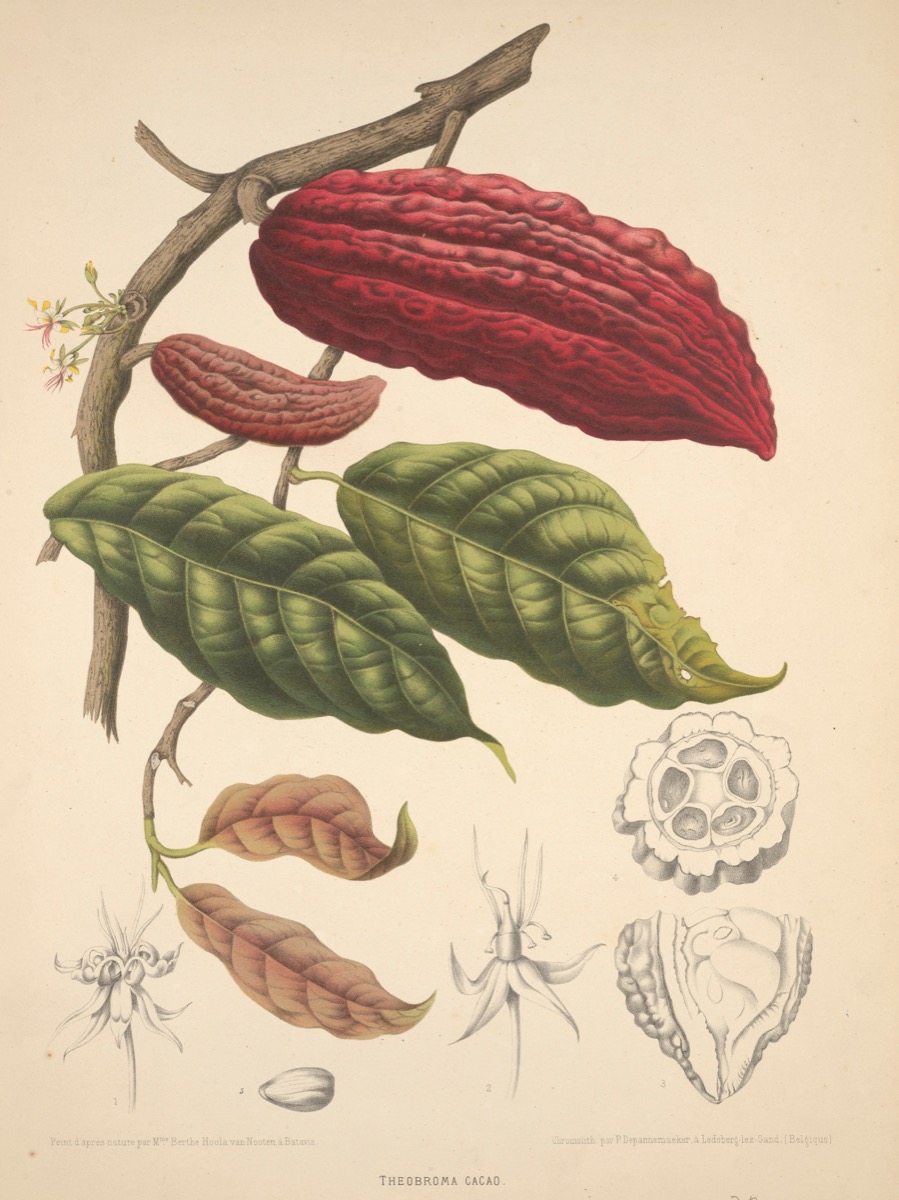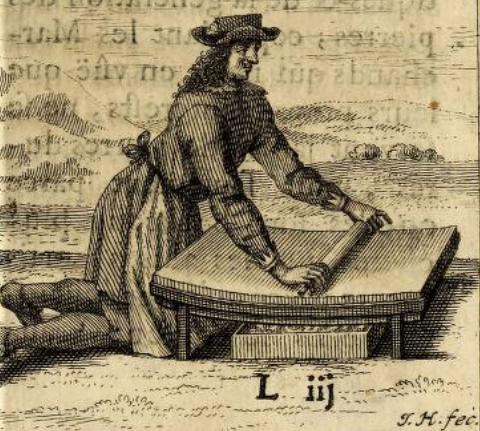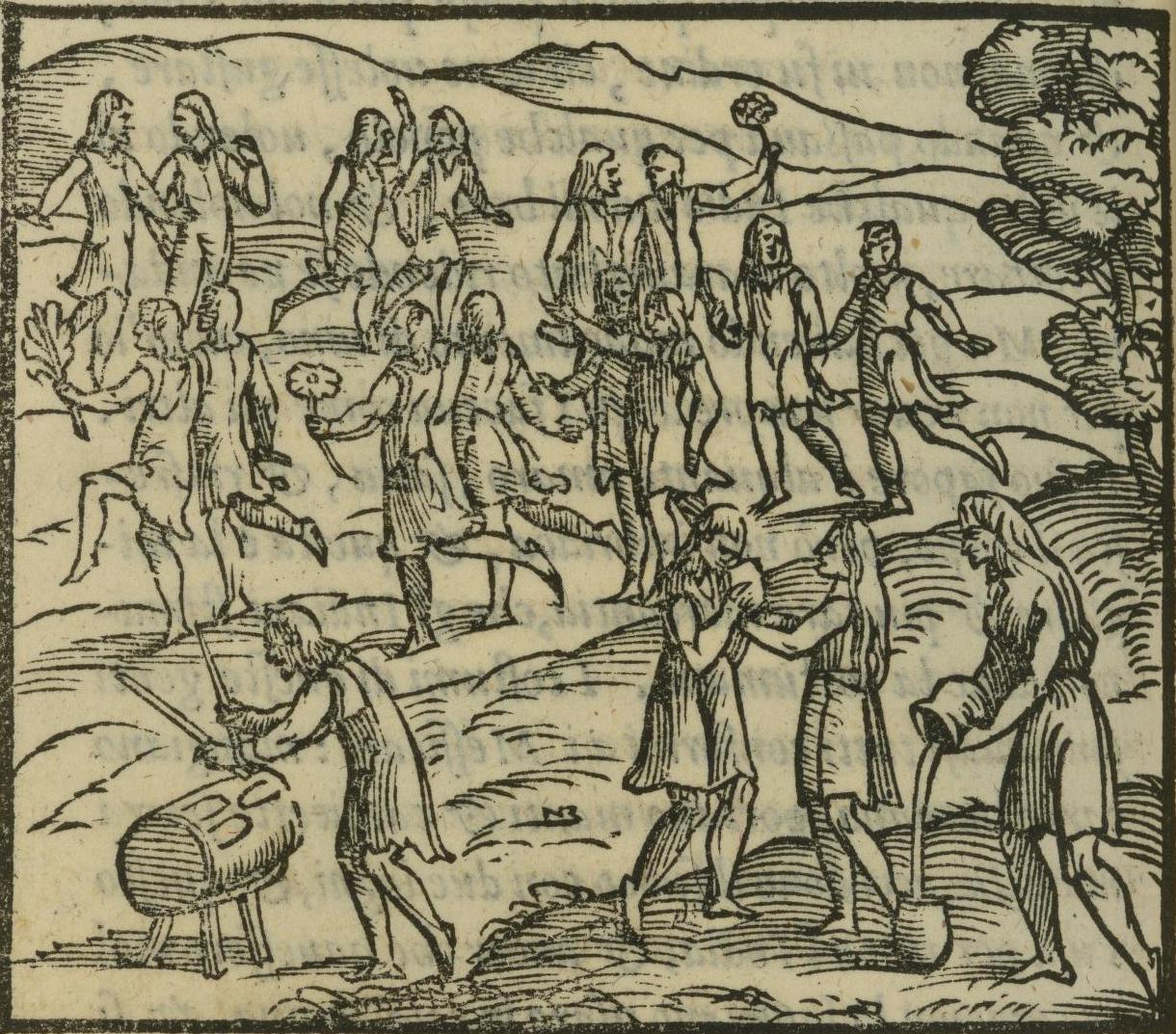The Origin Of The Word ‘Chocolate’
Every day, people around the word are speaking a tiny bit of the native language Nahuat.
 Science Diction is a bite-sized podcast about words—and the science stories behind them. Subscribe wherever you get your podcasts, and sign up for our newsletter.
Science Diction is a bite-sized podcast about words—and the science stories behind them. Subscribe wherever you get your podcasts, and sign up for our newsletter.
This week, people around the world will be opening heart-shaped boxes with “the food of the gods” nestled in crepe paper inside. But it took a lot of scientific and anthropological work to unearth the origins of both the tasty recipe and the word chocolate—which some anthropologists argue is an Indigenous word that has not been Anglicized.
“If the history of cacao were a 24-hour cycle, the glossy chocolate bars that we love and the confections that we love would only occupy a few seconds,” culinary historian Maricel Presilla told the The Slow Melt podcast.

That long history begins with the domestication of cacao, the bean used to make cocoa and chocolate. Just last year, researchers unearthed residual traces of DNA from Theobroma cacao in ceramic vessels from the Amazon basin. The vessels date back to roughly 3000 BCE, more than 1,500 years earlier than previously thought.
It’s typically thought that cacao was used for beverages, but that’s too simple of an explanation, says Carla D. Martin.
Martin is an anthropologist at Harvard University, and the founder and executive director of the Fine Cacao and Chocolate Institute. Yes, ancient people did drink it. But the beans were also used as flavoring for other foods, and as ritual offerings. They were also used as currency in Nicaragua, Mexico, and colonial Guatemala (which is now present day El Salvador). The Indigenous Pipil people in the Izalcos, a region of El Salvador, even did away with other trade items like feathers, and used cacao as their sole currency. Other regions followed their lead, and “it’s like [the people of] the Izalcos became the Swiss bankers,” says Kathryn Sampeck, an anthropologist at Illinois State University. In her research, Sampeck noticed that as cacao production was declining elsewhere during the early 1500s, the Izalcos produced “astronomical” amounts of the bean.
“I’ve done some analyses that look at the production levels in this region comparing it to other places, and it’s crazy,” Sampeck says. “Out of this port, 1.2 billion cacao beans per year for a span of at least 15 years—and that’s legal trade.” Because cacao was their sole currency, when Sampeck examined financial records from the region, she found evidence of extreme inflation due to the megaproduction of the bean.”

Prices in the Izalcos were at a minimum three times as much as the next-highest cacao producers, and sometimes as much as ten times the amount. “So, when I say when I say ‘astronomical,’ I mean it’s really astounding what this little place was producing,” she says.
When the Spanish arrived in what is now Central America, they too were quick to accept cacao as official payment, and even brought it back to Spain and incorporated it into their own monetary system for a time.
“[The Spaniards] had these big metal coins, and if they needed to make change to buy a tomato or something small, the only way to make change was to get out a knife and carve out a chunk of that,” says Martin. “It was totally impractical.”
It was this perceived value that gave cacao and chocolate a leg up on achiote or other ingredients from the Americas. In fact, cacao functioned as small change in the Izalcos as late as the 19th century.
Around 1580, the word chocolate cropped up in both European and Mexican texts, says Sampeck. And it wasn’t simply another name for cacao—it was the Pipil’s Indigenous Nahuat word referring specifically to the special drink of the Izalcos, where the first prototype recipes for what we call chocolate emerged.
“I think of it as a phenomenon kind of like buffalo chicken wings or Q-tips or anything like that,” says Sampeck, “where there’s this kind of branding that happens in the 16th century around 1580 that really identified that the word for a typical, local drink starts to become the name for for the seed and even a tree and all of that. It becomes much more generalized.”
As cacao’s popularity skyrocketed across the world, the word for the Pipil’s special drink exploded in the colonial and transatlantic markets, she says.

But according to Sampeck, the word never Anglicized. “It’s one of the words that’s never been translated… Every day, across the world, people are speaking [the Indigenous language] Nahuat,” she says. (Sampeck notes that there are scholars and linguists who argue that the word is a blend of Indigenous languages, or that it has a Maya root. But it was the Pipil people who were speaking the word at the time that it became adopted in other languages.)
“I think one of the most common beliefs is that chocolate is something European in nature,” says Carla Martin. “But what our research has really shown is that chocolate is in fact an Indigenous foodstuff that has conquered the hearts and minds of the world. So, whenever we’re consuming chocolate, we’re consuming something that was really designed in the Americas, by the Indigenous people of the Americas—and that’s really unique.”
Between that first domestication of cacao and today, researchers and chocolate makers have scientifically engineered chocolate to taste—and feel—even better to our palates.
“People like chocolate for many reasons that they perhaps don’t directly think about,” food scientist Richard Ludesher told Science Friday in 2014. “They think about the taste of chocolate. They think about the sweetness of chocolate. But an extremely important property of chocolate is its texture, and its property of being hard at room temperature and yet completely melty in your mouth.”
That melt-in-your-mouth property, surprisingly, comes down to crystals. Chocolate is a crystalline solid, which means that its molecules, atoms, and ions act together in an orderly pattern and have a flat surface. Creating those crystal formations is part of the art of making chocolate.
First, chocolate makers grind the cocoa nibs into a chocolate liquor. Once the cocoa particles are suspended in that liquor, the candy makers add other ingredients, like sugar. Then, they mix the whole melty, delicious liquor together to reduce the size of particles and release flavors and acids that are embedded in it. That process is essential for flavoring the chocolate, but it leaves the cocoa butter unstable. In order to remedy that, chocolatiers slowly heat the mixture to a point that melts away all the unwanted crystal formations, but leaves the ones necessary for stabilization.
“Chocolate should have a certain look to it, have a gloss and a sheen to it. It needs to have a snap, and it needs to have the right mouth feel,” says Ludescher. “What you have is a fairly complicated thing. And when you put it in your mouth, and you wait long enough—if you’re not impatient—it will melt back to that liquor and release all the flavor.”
Johanna Mayer is a podcast producer and hosted Science Diction from Science Friday. When she’s not working, she’s probably baking a fruit pie. Cherry’s her specialty, but she whips up a mean rhubarb streusel as well.